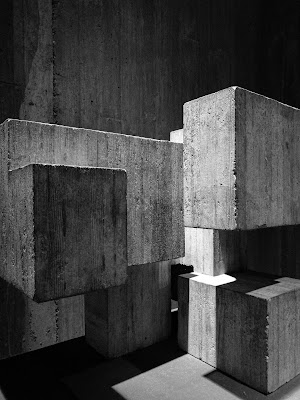Normal Consistancy of cement
Introduction
For the determination of the initial setting time and the final setting time, neat cement paste of a standard consistence has to be used. Therefore, it necessary to determine for any given cement the water content which will produce a paste of standard consistence.
In this experiment we were tried to find the best or acceptable water cement ratio to get the initial & final setting time, and to draw the relation between (penetration & time) and (penetration & water cement ratio).
In this experiment we were tried to find the best or acceptable water cement ratio to get the initial & final setting time, and to draw the relation between (penetration & time) and (penetration & water cement ratio).
 |
| Cement blocks |
Objectives
We try to find and calculate the water cement ratio to get a cement paste standard consistence. After that we calculate the initial & final setting time by means of the vicat needle (of course with drawing).
Equipment
- Vicat apparatus (plugs 10mm diameter & needle).
- Mixture of cement.
- Glass graduate (to measure the water).
- Balance.
- Cement (we use ordinary type 500g).
- Water (performed distilled water) , we use 150g in the first trial and 175g in the second.
Procedure
First of all we got a 500g of cement and put them in the mixture, and then by the glass graduate the 150g water put in the mixture and waits 30 second to let the cement and water be calm. After that the mixture was turned on for 30 second at low speed then turns it at high speed with one minute and turns it off. We were waited for 15 second to let the cement paste be settled down. Then toss six times through a free path of a bout 15 cm from one hand to another to produce an spherical shape mass to out it in the vicat apparatus mould with no spaces in it. After filling the paste in the mould a fine surface on the top were made by few light touches of the pointed end of the trowel, of course we got an excess amount of paste so we removed it slowly. So the paste now is ready to the test. We change the amount of water to be 175g with same amount of cement 500g, and then we did the same procedure in the test.
Data & Calculation
Table (1): | w/c % | Penetration (mm) | Water (ml) |
|---|---|---|
| 30 | 3 | 150 |
| 35 | 12 | 175 |
| Time (min) | Penetration (mm) |
|---|---|
| 30 | Full pen. |
| 45 | Full pen. |
| 60 | 38 |
| 75 | 35 |
| 90 | 30 |
| 105 | 26 |
| 120 | 22 |
Comment & Discussion
From table-1 we get:
 |
| Fig -1 |
From table-2 we get:
 |
| Fig -2 |
FST = 90 + 1.2 IST in minute
In our lab : FST = 90 + 1.2 ( ) = minute
Conclusion
We learn how to use vicat apparatus in finding the consistency which is important for determination of the IST and FST (depth equal 10mm).And we find the water cement ratio which is important in obtaining good consistency of cement paste. The setting time used to describe the stiffening of the cement paste. Broadly speaking, setting refers to a change from a fluid to a rigid state. The initial set corresponds to a rapid rise and final set corresponds to the peak temperature. So the cement paste is a good one if it has IST and FST in standard limit. Where the IST important to transfer the cement paste without isolating and breaking the bond and the FST important in finding the time for gaining the strength if cement paste.






No comments: